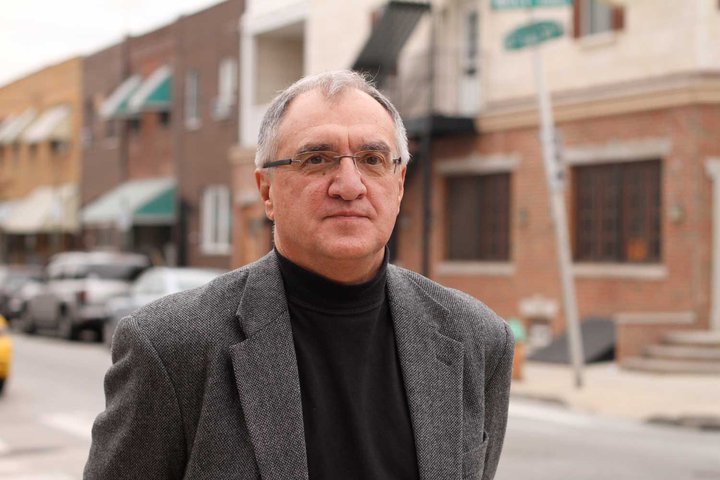A good number of readers have asked me how they can learn more about organized crime in Philadelphia, especially during the Nicodemo “Little Nicky” Scarfo era in the 1980s.
I suggest they read former Philadelphia Inquirer reporter George Anastasia’s “Blood and Honor: Inside the Scarfo Mob – the Mafia’s Most Violent Family,” which is perhaps the best book on Philadelphia organized crime. Originally published in 1991, an updated and expanded edition is available through Camino Books.
The book covers Scarfo’s bloody reign and the internecine mob wars in Philadelphia, where bodies were purposely left on the streets as a message. Anastasia’s primary access inside the Scarfo mob was via a cooperating witness named Nick Caramandi.
Being half-Italian and raised in South Philadelphia, the hub of the South Philly-South Jersey Cosa Nostra crime family, I know or know of most of the people and places mentioned in the book. I lived through the Scarfo era, and I’ve interviewed many people who were well-acquainted with Scarfo, from his nephew and underboss-turned cooperating witness, Philip Leonetti, to several detectives and FBI agents who worked the mob back then.
I reached out to Anastasia and asked him why he wrote the book.
“Serendipity,” Anastasia responded. “Nick Caramandi had begun cooperating and was being kept in a safe house by the FBI. Caramandi had reached out to a book agent in New York who was putting a deal in place. The FBI arranged for Nick to meet with one or two reporters from New York, but they didn’t connect. The feds then contacted The Inquirer and an editor, Bill Marimow, put them in touch with me. I met with Caramandi, and we hit it off. I already knew the back story, so he felt comfortable with me. I think the fact that I was an Italian-American helped.”
Why do you call the Scarfo mob the most violent mafia family?
“It was the wanton violence. Scarfo used violence as a solution to any and every problem. That’s a big reason why it all fell apart,” Anastasia explained. “Caramandi cooperated, for example, because he figured Scarfo would kill him after the Rouse extortion got screwed up. It wasn’t that he was worried about going to jail. He had already done jail time. But both he and Tommy DelGiorno, who cooperated at the same time, had screwed up and both knew that the way Scarfo would deal with it was to have them killed.”

How would you describe Scarfo? And how did he differ from former mob boss Angelo Bruno?
“Scarfo was a psychopath. He confused fear with respect and never really understood what it meant to be boss,” Anastasia said. “Angelo Bruno ruled with an iron fist covered with a velvet glove. Scarfo saw no reason for the glove.”
How would you describe Caramandi?
“I found him fascinating, a great story-teller and a funny guy. Still do,” Anastasia said. “In retrospect – and I think he agrees – he should never have gotten made. It gave him status and power, but it took away his ability to maneuver in the underworld. He was better off being an associate who could wheel and deal on his own terms.”
Anastasia said he interviewed dozens of people, such as lawyers and investigators. He was covering the mob story for the Inquirer at the time, and he incorporated that newspaper coverage into the book.
Scarfo died in prison in 2017. What is the legacy of the Scarfo Cosa Nostra crime family?
“What happened in Philadelphia during the Scarfo era happened in almost every other American city where the Mafia operated,” Anastasia said. “So, in that respect Philadelphia was a precursor of what was to come – incompetent leadership, highly sophisticated law enforcement and devastating use of cooperating witnesses.
“This, coupled with the fact that by the 1980s the best and the brightest in the Italian-American community were doctors, lawyers, educators and the mob was scraping the bottom of the gene pool. Angelo Bruno was smart, and he knew how to lead. For him, I think, the Mafia – omerta, men of honor, etc. – was truly a way of life.”
But a generation later that wasn’t the case for a lot of the mob guys, Anastasia noted. He said the mob was only a way to make money.
“And when they got jammed up, they made a business decision: How do I cut my losses? By cooperating. And the witness protection program gave them a way out, a chance to walk away. That didn’t exist in the 1930s and 1940s. Different time, different type of gangster. So, all these things factored into the demise of the American Mafia. And it’s never coming back.”
Paul Davis’ Crime Beat column appears here each week. You can contact him via pauldavisoncrime.com.





